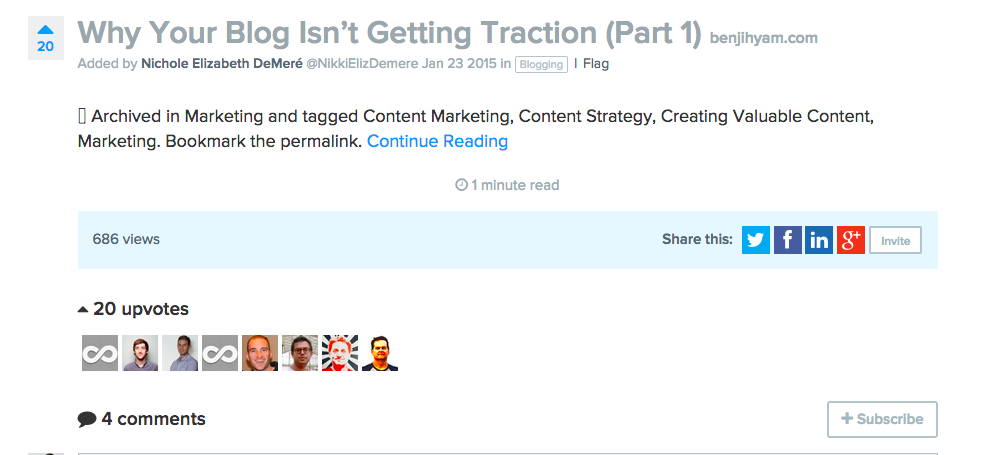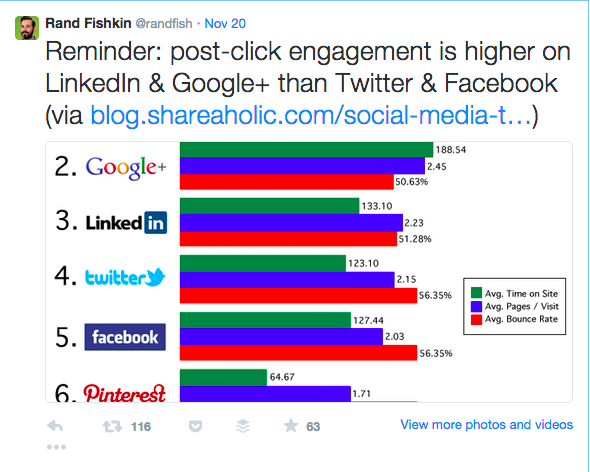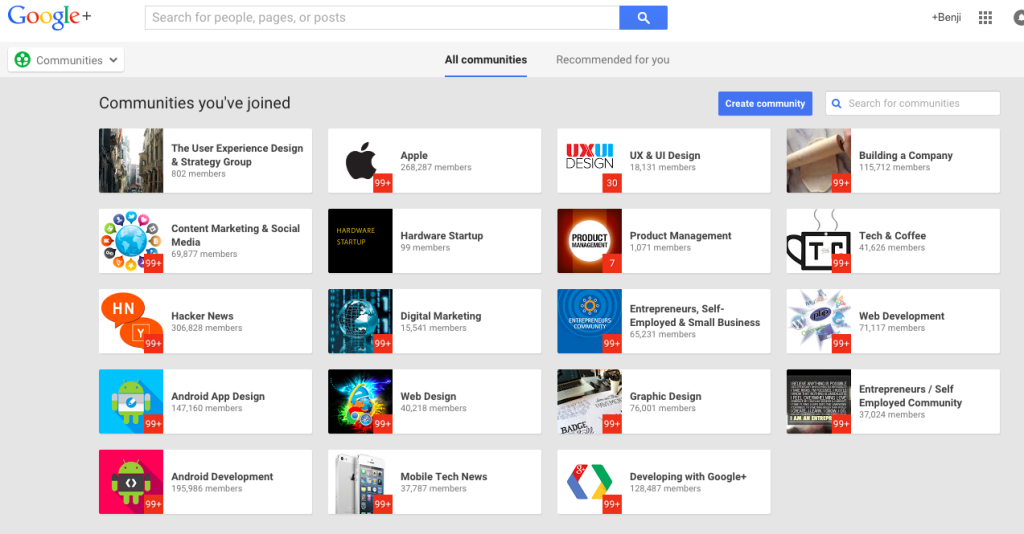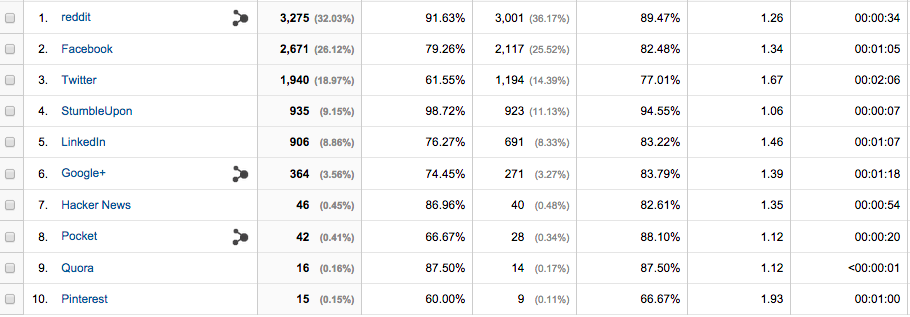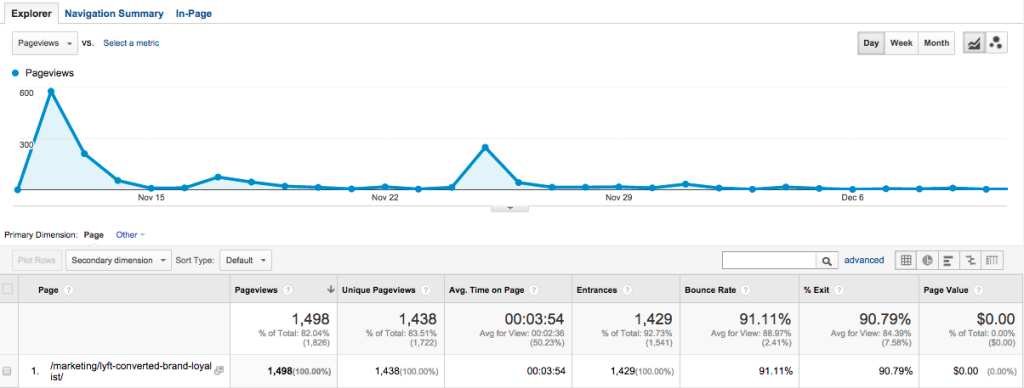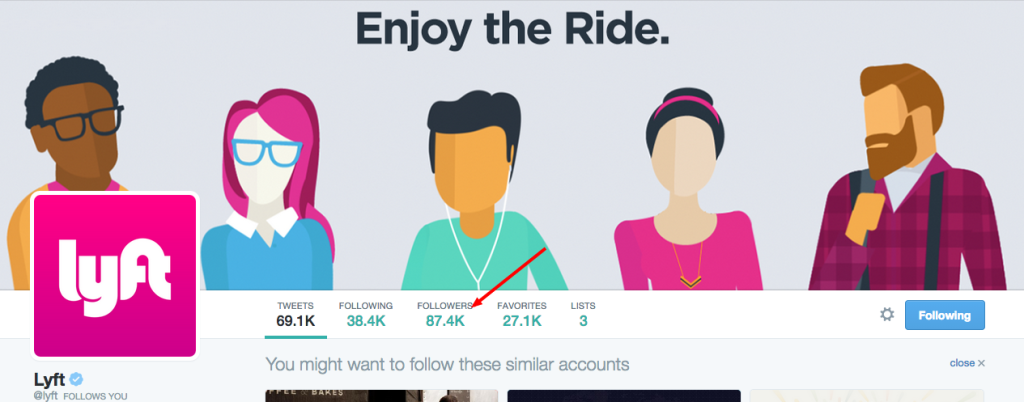As we discussed in part 1 of the series, creating valuable content is only half the battle when it comes to content marketing. The other half of the battle is getting people to actually read your content.
From talking with numerous founders, content marketers, and bloggers over the last month, it seems like distribution is the part of content marketing that most people struggle with.
The good news is that I’ve spent a lot of time figuring out a combination of distribution tactics that can get you traction quickly.
These distribution tactics are the same ones I used to grow the Build Blog to over 20,000 monthly unique visitors in less than four months. These are also the tactics I use to grow this site. These are not the only ways to distribute content. However, these tactics are my go-to ways to grow my audience quickly and authentically.
If you have other ways you distribute content that have worked for you, or your company, I encourage you to share what worked for you in the comments below.
My goal for when you finish reading this post is that you have some new ideas and tactics that you can leverage for your own site.
Now without further ado, lets look at the first part of my distribution strategy which is leveraging the power of community.
Leveraging The Power of Communities to Grow Your Audience
When I talk about communities, I’m talking about two different types of communities: community sites and communities within social networks.
Community Sites
Reddit is the most well known community site with 174 million active users (November 2014). This channel has proven itself over and over again that it can drive a TON of traffic. When i’m saying tons of traffic, I mean anywhere it can drive up to 100,000+ visitors in a day if you were to hit the front page. Most recently we had a post on the build blog about iPhone 6+ design that drove almost 7,000 visitors in a day from trending in the iPhone subreddit.
The key with Reddit is to find the right subreddit and spend some time engaging with the community. Note: Reddit can a very harsh place to people who are outsiders. It’s essential for you to really understand the Reddit community and post your content in the right subreddits to have success using this channel.
If you’re not a fan of Reddit and/or haven’t had much success with it there are also a bunch of niche community sites popping up that make great distribution channels.
Why do community sites make a great distribution channel?
Community sites have already done the work for you. They’ve spent time and effort growing an audience of people interested in a specific category. By leveraging their audience, you should able to drive a good amount of traffic to your post (as long as your content is interesting and you don’t spam the community).
Here are some examples of community sites that I use regularly:
For tech: Hacker News, Stack Exchange
For Design: Designer News
For Marketing: GrowthHackers, Inbound.org
For Founders/CEOs: FoundersGrid, Foundcy, FounderNews, Bootstrappers.io, FounderDating
For anything: Quora
(If you know of any others, feel free to leave a comment in the comments section and i’ll add it to the list and credit you).
How I’ve Used Community Sites to Drive Traffic:
For my domain expertise, GrowthHackers (GH) is my go-to community. Part 1 of this series, which focused on creating valuable content, ended up getting 39 upvotes and 18 comments after trending on the front page for five days. This resulted in around 600–1000 visitors through this site alone.
@NikkiElizdemere was kind enough to see my post trending on GrowthHackers and post it to Inbound.org (another community site for marketers) which resulted in another few hundred views.
All in all this resulted in around 1,200 visitors coming directly from these two sites in about five days. The other 300+ visitors came as a result of people finding my article on these sites and sharing the post via their social accounts.

How can you get your article to trend on community sites?
Typically it takes around 4-8 upvotes to get your article to trend on either of these sites. For sites like HackerNews, it might take anywhere from 20 to 25 votes or more. For some of the newer sites like Designer News, Bootstrappers.io, etc. it takes less than 4. There are other factors that play into the algorithms as well such as timing, people who click into your post, etc.
The best way to get votes on any of these communities is to become an active member of community, participate in discussions, form relationships with regulars, and of course the most important thing: share something interesting and/or helpful.
I’ve also found that getting people to comment on your post results in more people upvoting your content and participating in discussions.
Another way to leverage the power of community is through communities inside social networks. Lets look at that next.
Communities within Social Networks
The old way of social media marketing might be dying — ie. posting directly to your fan or company page and hoping to get thousands of visitors as a result. However, the new way to drive traffic is by leveraging communities inside of social networks.
Again, lets not reinvent the wheel here. Your time is precious, and growing an audience of your own takes a lot of time. But, I guarantee if you look in the right places, you can find communities that exist on your social platforms with an audience that is hungry to read your content.
For example: If your audience is founders, there are probably numerous public and private Facebook groups that already have an audience of 1,000 or more founders. If you run a surfing blog, there are probably a bunch of public and private Facebook groups that have thousands of surfers in them. Etc.
Join these groups and start engaging with other members – then once you get a feel for the group, share content that members of the group might like and find valuable.
Also – revisit old channels you haven’t looked at for a while to find communities. For example LinkedIn Groups and Google+ communities.
What if I were to tell you that Google+ wasn’t a ghost town, would you believe me?
Well it turns out it’s true. I came across a tweet from Rand Fishkin a while back about post click engagement.
This tweet made me wonder, am I missing something within Google+?
I gave up on trying to build my personal following and company page following years ago, but after exploring a little bit, I came across communities within G+. Here are some of the communities I’m a part of (Just for context: i’m using these groups as a distribution channel for my job at Thinkapps and for this site):
The audience on Google+ differs from the audience on other social networking platforms, I’d say on average it’s a little more of a technical audience. Therefore if your company is more tech oriented, I’d say the communities on Google+ might be a good distribution channel for you.
Here’s an example of one of my posts to the HackerNews Google+ group:
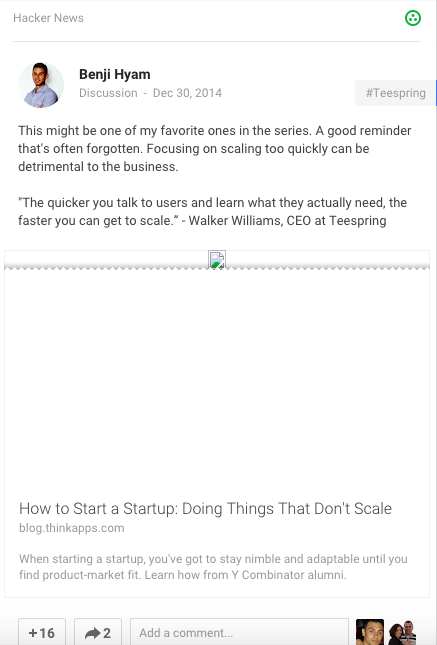 This post got some pretty high engagement for a social network that is supposed to be a ghost town. 16 people gave it a +1 and 2 people shared it. Not bad.
This post got some pretty high engagement for a social network that is supposed to be a ghost town. 16 people gave it a +1 and 2 people shared it. Not bad.
If we look at this screenshot of social traffic for the build blog in January you’ll see the mix of sites that drove the most traffic.
Reddit came in at #1. Facebook came in at #2 – of which all traffic was driven through communities inside of Facebook (also had the 3rd highest time on site). Twitter came in at #3 – which was mostly an aggregate of community sites (highest time on site). StumbleUpon we won’t really look at because the quality of the traffic wasn’t great. However pay attention to #5 and #6 – LinkedIn drove 906 visitors w/ 1:07 and Google+ drove 364 visitors with the second highest time on site.
The key is to find a mix of communities that work for your content strategy and leverage them. Not all of these channels will work for you but I guarantee if you look in the right places, you might find some great distribution channels for your content.
Another effective channel I’ve found for distribution is to leverage other people’s audiences. Lets take a look at that next.
How to Leverage Other People’s Audience for Distribution
For the launch of this website, I was able to get over 1,500 pageviews to my first post almost exclusively from Lyft promoting my post to their audience. I did the bare minimum when it came to distributing this post.
Lyft tweeted my post out several times from their Twitter account to 87k followers – this created the initial lift in traffic you see above. It was also posted to GrowthHackers the day of the release.
Lyft featured my post in their new product announcement on their blog which created that second bump in traffic.
You’re probably wondering to yourself how I got Lyft to tweet my post and include my post in their product announcement?
The truth is I didn’t.
All I did was get in front of the right people, with the right story and let Lyft take care of the rest of the promotion for me.
Here’s how it happened:
For the most part, everyone (including myself) likes when something nice gets written about them. Think about what would happen if I wrote a story about you; would you share it with your followers?
I genuinely had a great experience using Lyft line and thought i’d share the story on my blog. When it came time to launch my site, I thought to myself, Lyft would probably love this story. Lyft is all about interacting with their community. So, who better to tell their story than an frequent user of their service?
My coworker Becky tweeted the article out from the Thinkapps account and tagged Lyft in the post (I’ve also found it effective to do the same thing from a personal account).
@thinkapps @benjihyam Great article! We’ve got some pretty cool things in store for Lyft Line – stay tuned 
— Lyft (@lyft) November 12, 2014
Then the next thing I knew Lyft tweeted it out from their company account.
Marketing guru @benjihyam’s reason for using #LyftLine? Human connection. How he became a Lyft “brand loyalist”: http://t.co/HfbfbLUQbf
— Lyft (@lyft) November 13, 2014
After this tweet came through, someone from their PR team e-mailed me and asked me if they could distribute the post to their community.
I said sure. ☺
A few weeks later they launched a new product announcement and included my post on their blog.
 Between the post being shared on GrowthHackers, Lyft Tweeting to 87k followers, and Lyft putting the post in their product announcement — I received just under 1,500 pageviews just from getting a tweet in front of the right people at Lyft.
Between the post being shared on GrowthHackers, Lyft Tweeting to 87k followers, and Lyft putting the post in their product announcement — I received just under 1,500 pageviews just from getting a tweet in front of the right people at Lyft.
I used a similar strategy at the launch of the build blog to get my Apple Watch post over 19,000 pageviews in a week. I wrote about creating the content in my last post but now i’ll share what we did to get it picked up by publications by 9 to 5 mac, Gizmodo, Paris Lemon and more. Lets look at how I did that below.
Syndication + PR as Distribution Channels
There are a number of sites that will accept syndicated posts if you’re just looking for outlets to publish your content to. Quicksprout has a really good article about this.
However, if you’re looking to get picked up by larger publications and are looking for some media exposure, i’ll share how to do that below.
@benjihyam For the distribution I would love to hear how you get syndication when you are starting out and lack credibility/social proof
— Alexander Norman (@alexandernorman) January 30, 2015
When just starting out, the best way to get syndicated, or published on top media outlets is by ‘trading up the chain’ (a concept coined by Ryan Holiday in his book Trust Me, I’m Lying). I highly recommend reading this if you haven’t yet. His book covers unconventional PR tactics to help you get a ton of exposure.
I’ll give you a quick overview of what trading up the chain means: A lot of larger publications look to smaller publications for stories — so if you’re able to get published on a small to medium site, a lot of times larger publications will see the story and republish it on their own site.
That’s essentially what happened with the Apple Watch Post.
9 to 5 mac was the first publication to pick up the story. To start, I went on all of the publications I thought the post would be a good fit for, and found the editors who have covered similar stories in the past.
I sent a few sentence e-mail to the editor giving them a brief overview of what the story was about and asked them if they’d be interested in covering it. We also tweeted the story from our company account to editors and publications that might be interested in the story. The first one to bite was 9 to 5 mac.
They picked up our story the day after we published it and from there it took off. Immediately after Gizmodo picked up the story as well as publications like BGR, Paris Lemon and about 30 sites from all around the world.
The result was our story had hundreds of thousands of impressions on multiple outlets and drove 19,000 pageviews directly to our site in a week’s time.
Here’s another great post that shares how my friend Greg Muender got his post on Entrepreneur.com.
Wrapping it all up
This is the mix of tactics that I use to grow the different sites that i’m responsible for. The key is to know which tactic to leverage for different pieces of content. If a channel isn’t working for you, it might not be the channel, it might be the way you went about using it. You must continually experiment and use a mix of different tactics to see what works for you and your business.
If you have other ways you’ve used to distribute content, i’d love to hear your methods in the comments below.
As most of you have figured out by now, being the only person who writes content isn’t a scalable way to grow. In my next post i’ll be sharing how to build and scale a content team.
Post now live: Building a Content Team: Hiring In-house vs. Outsourcing vs. Hiring Freelancers
Interested in getting one-on-one help with your content marketing strategy? Request a call below via Clarity.
Please share your biggest takeaway with me on Twitter @benjihyam. Next week i’ll pick one person who shared their takeaway with me to do 30 a minute call with and help them with their content strategy.


